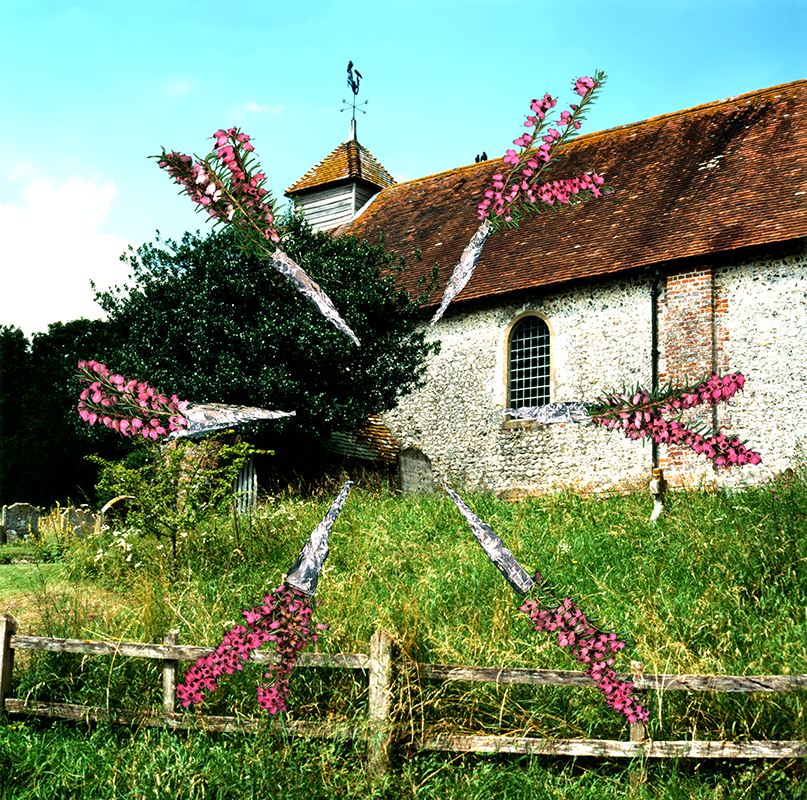
Photographs are often seen as ‘windows’ on the world, giving viewers direct access to some other time and place. In treating photographs like windows we tend to forget that what they depict appears only there and nowhere else. Despite appearances, realism in photographs is nothing like reality seen by natural eyesight. For example, blurring in photographs is commonplace and it does not spoil their realism, whereas normal eyesight is not blurred.Photographic realism may be conventional and unlike the reality of eyesight, but it is supposed to honour an imaginary contract between the real world and its representation. At least, that is the case in portrait photography or photojournalism. The only groups who wilfully break the contract, and pay no penalty, are those artists who do not claim to depict the world as it appears.

Their differences are emphatic, but that does not make them absolute.To the contrary, both the land underfoot and the (apparently) air-borne bric-a-brac are somewhat shabby, despite their being shaped if not manufactured. Most of the landscapes are obviously cultivated, and even brooks and seashores are not free of management. The houses, crops, and fields may differ in scale and import from the spoons, penknives, gewgaws (and so on) but they belong to the same economy of usage and idealisation. Everything that appears here is used, elsewhere, to embody, replicate or enthuse a narrative of Englishness: an old world of cottages and sweet maids, horses and hounds, smithies and country craft that somehow overlay one another in the mythic idea of an intimate ‘England’ of fellowship. The mythic country is always integrated.
Roger Hopgood’s photographs allow all those ideas to surface, but nothing rests exactly where convention says it should. The milkmaid, hunters, brasses and so forth should be comfortable, quiescent or even dead metaphors, but everything is unsettled. Everything strikes a false note - since nothing is a satisfying representation of the thing it claims to represent - not maid or hunters, not cooked meat or pots and pans; not the landscapes, which are scrubby and indefinite.
Perhaps everything begins with a false note because that is the strange (but normalised) state of the country? Nothing escapes falsification. All the ordinary and overlooked landscapes and all the mass-produced objects contribute to the continuing, falsifying myth of ‘England’, its past and its difference from others.
'Moreover, the abundance of the falsifications has always been thus. The number and concentration of false notes that make the hymn of the country signal the permanence of this myth, which is impervious to lived experience and yet touches it profoundly.Indeed, the particular mythic nature of ''England’ suggests it has always been rising into falsification. The country rises into falsification because that state best represents its history. Its fate has always been to be falling away from a lost and idealised beginning and always to be rising, by falsification, into what it has become.Photographs, which are so different from natural eyesight, even when they claim to be realistic, are the perfect medium for picturing this falsification. They may be said to embody it. Consequently, whether a photograph is an authentic ‘documentary’ (as in the ‘window’ usage), or one of Hopgood’s ‘Treasures’, each of them begins in falsification and manipulation. All ‘realistic’ images try to erase their origins as a medium and present themselves as the thing itself. Myth is similarly adamant in laying claim to deeper truths. At the same time as culture is made to seem like nature, Hopgood moves in a different direction. He cannot prevent culture turning (via myth) into nature, or normality. But he does turn the process of falsification, which is inherent in nationalism, into a different kind of virtue.
John Taylor